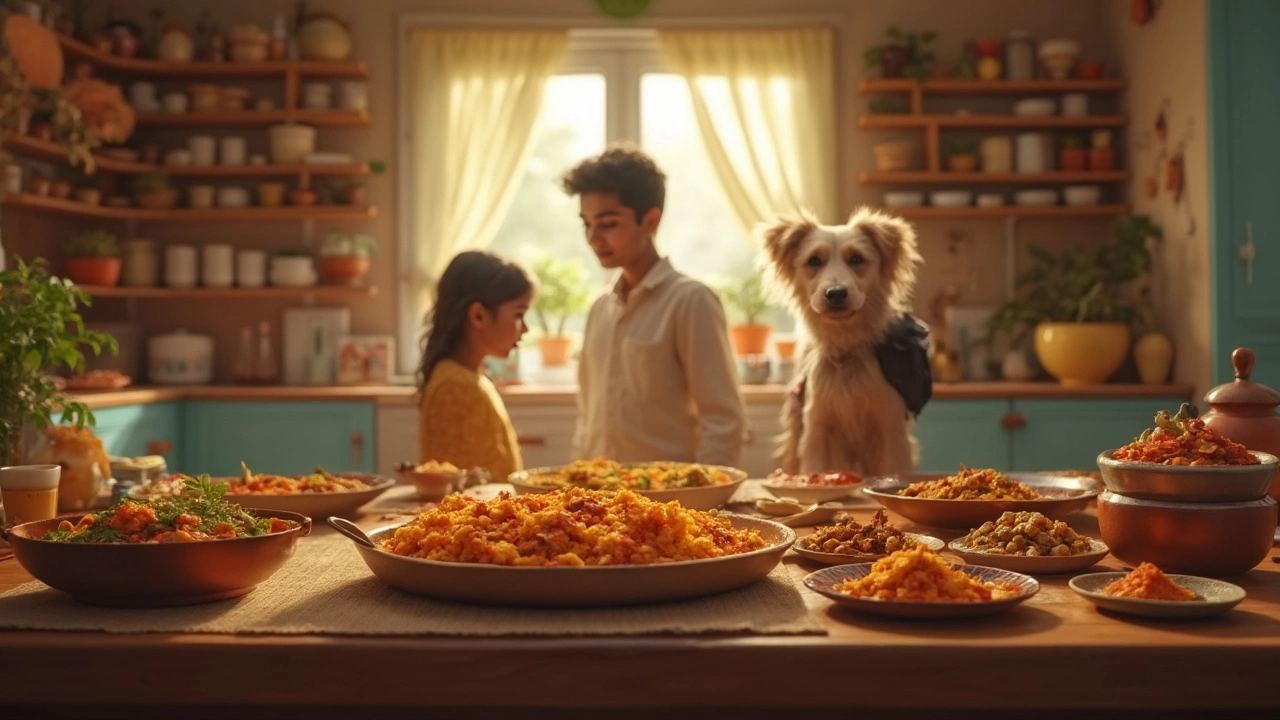Human Food for Dogs: Safe Options, Risks & Feeding Tips
Ever wonder if that leftover chicken or a slice of apple is okay for your dog? You’re not alone. Many pet owners want to share a bite, but not every kitchen staple is dog‑friendly. Below you’ll find the most common human foods, the ones to steer clear of, and how to serve the safe picks without upsetting your pup’s stomach.
Foods Your Dog Can Usually Eat
Plain cooked meats (chicken, turkey, beef) are a top choice. Remove skin, bones, and any seasoning—salt, garlic, or onion powder can be harmful. A few fruit pieces like apple slices (core removed), blueberries, or banana chunks are also fine in moderation. Veggies such as carrots, green beans, and pumpkin provide fiber and vitamins; just steam or boil them without added butter or oil.
When you’re at the grocery store, look for plain, unsweetened yogurts or cottage cheese. A spoonful can add calcium, but keep the portion small because dairy can cause diarrhea in some dogs. Cooked rice or plain oatmeal works as a gentle carbohydrate source, especially for dogs with upset stomachs.
Foods to Keep Away From Your Dog
Chocolate, grapes, raisins, and caffeine are toxic and can lead to severe health issues. Onions, garlic, and chives—even in powdered form—damage red blood cells. Xylitol, a sweetener found in sugar‑free gum and some peanut butter, can cause a rapid drop in blood sugar and liver failure.
Fatty cuts of meat, pork bones, and anything fried or heavily seasoned should be avoided. They can trigger pancreatitis or cause choking. Also, never give your dog raw dough; the yeast can expand in the stomach and produce dangerous gas.
If you’re unsure about a specific food, a quick web search or a call to your vet can spare you a lot of worry.
Portion control matters. Even safe foods can add extra calories that lead to weight gain. A good rule of thumb is to keep treats (including human food) to 10% or less of your dog’s daily caloric intake. For a medium‑size dog, that’s roughly a tablespoon of cooked meat or a few fruit slices.
Introduce new foods slowly. Offer a tiny piece and wait 24 hours to see how your dog reacts. Any signs of vomiting, diarrhea, or itching mean you should stop feeding that item and contact a vet.
Remember, balanced commercial dog food is designed to meet all nutritional needs. Human foods are great for variety and occasional rewards, but they shouldn’t replace a complete diet. If you want to incorporate more fresh foods regularly, talk to your vet about a homemade diet plan that includes the right vitamins and minerals.
Bottom line: share the kitchen safely. Stick to plain, cooked meats, simple fruits, and veggies, avoid toxic items, watch portion sizes, and always monitor your dog’s reaction. With these basics, you can enjoy mealtime together without risking your pup’s health.

Can I Feed My Dog Human Food Instead of Dog Food?
Feeding your dog human food can be tempting, but is it healthy? This article explores the pros and cons of replacing dog food with human food for your pet. Dive into what's safe and what's not, and get tips to ensure your furry friend stays healthy and happy. Learn from real-world experiences and get informed about portion control and potential health risks.
read more



